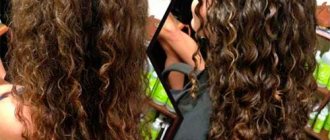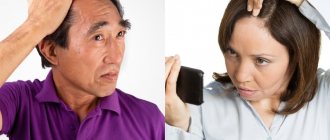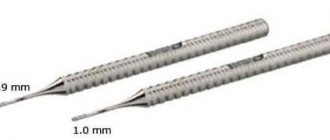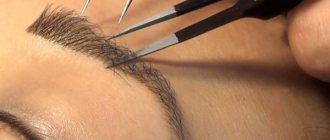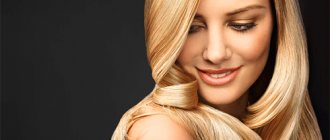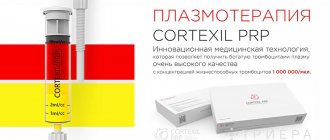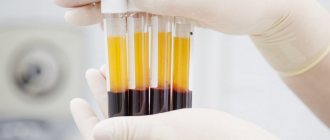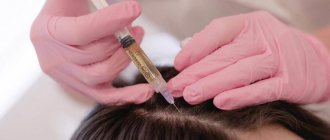Hair implantation is one of the innovative methods through which society can combat baldness. The most unpleasant cosmetic defect is having no hair or having sparse hair. Thinning hair is especially hard on women.
Because of this defect, people often have complexes and experience constant discomfort. Drug treatment, various masks, products, cosmetic techniques can only improve the structure of the hair that remains or slow down its loss.
It is impossible to completely eliminate the consequences of many pathological diseases. Therefore, you can use a method such as artificial hair implantation, which will help a person restore his normal appearance.
Implants – what are they?
The procedure uses fibers of artificial origin that have been tested over a long period. These are hair implants. They are made from biosynthetic polymers that have undergone strict testing.
Biologically compatible analogues like natural hair. They are elastic, different in hardness, have a wide range of shades (21), fiber length is 15-45 cm. By the way, if the shades are mixed so that the color range of the hair is closer to natural.
For more than twenty years, biocompatible fibers have been used in the European Pharmacopoeia. They tolerate mechanical and chemical stress well and have antibacterial properties. Externally, implanted hair is similar to natural hair. They can also be washed, rolled in curlers, or dried with hot air from a hair dryer.
What is the difference between implantation and transplantation?
1. Transplantation is an operation when one’s own material with a follicle is transplanted onto an area without hair (in whole or in part). There are two types of solutions to the problem.
- Patchwork, during which micro material is transplanted into small areas. Excision is performed under a microscope;
- Seamless. Hair follicles are cut with a device without cutting the skin. The method eliminates alopecia in small areas.
After the procedure, within a couple of months the hair begins to grow. After the transplant, the full result will be visible in about a year. Hair completely retains its natural color, structure, and growth rate. For transplantation, material is taken from the back of the head.
Transplantation is not performed for people suffering from diabetes, who have a reduced blood clotting response, or have skin diseases.
2. Implantation is a transplantation of biologically compatible hair. Biofibre implantation is the only technology in the world that has undergone numerous trials over a long period. This option can be used even with complete androgen-induced baldness, which cannot be done with transplantation.
The threads are secured with a hook equipped with a keratin capsule. This helps the hair to take root, so the immune system does not reject it as a foreign body.
Contraindications
- Systematic use of NSAIDs (less than 48 hours before the procedure), anticoagulants, fibrinolytics,
- Systemic use of corticosteroids (less than 2 weeks before the procedure),
- Recent illness accompanied by fever,
- Rashes of unknown origin on the skin and mucous membranes,
- Malignancy (especially blood or bone), chemotherapy,
- Connective tissue diseases of an autoimmune nature,
- Chronic liver pathology in the stage of decompensation,
- Pregnancy and lactation.
Before plasma lifting, you must also take a blood test:
- for the presence of infections - HBs-Ag, anti-HCV, AT to HIV 1,2, RW (HIV, hepatitis B, C, syphilis)
- clinical blood test.
Implantation technology
This is a fairly expensive procedure that involves the cost of caring for artificial hair. Of course, there are no guarantees that the result will make the person completely happy, but it will still relieve baldness.
Biofiber is completely similar to natural human hair. Its excellent survival rate is ensured by the keratin tip. Among 21 hair shades, the patient can choose any color he likes; required length; degree of smoothness. Implantation is a long operation (five to six hours), which is performed in specialized clinics. Local anesthesia is used for pain relief.
Before undergoing this operation, a trial procedure is carried out two weeks before. They implant a small piece of artificial hair and observe how the immune system reacts. If all is well, then you can start transplanting.
Depending on the device, 600-4,000 artificial threads can be implanted in one operation for partial baldness, and up to 8,000 for complete alopecia. Usually, the implantation of biocompatible hair occurs in several stages with breaks of 2-3 weeks. There is no need to stay in the hospital; outpatient treatment is sufficient.
Problems that arise after hair implantation
This is an expensive procedure and time-consuming, so you need to familiarize yourself in advance with what problems may arise during hair implantation. There are several main problems:
- After the procedure, the areas of the head with implanted hair may be affected by pathogenic bacteria, as they become too sensitive. Natural hair follicles are equipped with a unique mechanism that can protect the scalp.
- Artificial threads are attached through the skin layer to the hair roots, which are located in the dermis. During implantation, there is no mechanism that could prevent the microflora of the scalp from entering the dermis, damaging it. Therefore, people with hair implants may often encounter skin bacteria.
- Biocompatible fibers are foreign bodies that the human immune system will automatically fight. This is how nature works. Therefore, after implantation, it begins its struggle to get rid of the foreign body and the implanted hair begins to gradually fall out.
- If this happens, scars may form due to inflammatory processes, which will then have to be removed surgically. Scars are dangerous because they deeply affect the hair follicles, and after that the hair will never be able to grow.
Who should not undergo implantation?
Despite all its advantages, hair implantation is not a natural method of hair restoration. Like any surgical intervention, this procedure has a number of contraindications, so not everyone does it.
In what cases is artificial hair implantation not performed?
- If the trial transplantation of artificial threads was negative due to rejection by the immune system, then the patient will be denied further procedures. What's the point of wasting money, and a lot of it, if the implants fall out. Although such people make up only 1%. They may also experience other reactions when rejecting a foreign body.
- If the patient suffers from hyperhidrosis. The reason is that artificial fibers can cause increased sweating.
- If the patient suffers from infectious skin diseases: dermatosis, dermatitis, he has severe allergic skin reactions. Reason: organic hair can irritate the skin due to poor breathability of the scalp and impaired fat metabolism.
- Contraindications also apply to patients who are pathologically dissatisfied with their appearance, i.e. suffering from dysmorphophobia. In a nervous state, they can pull out the hair implanted in them.
When is a transplant necessary?
Is it really possible to solve the problem of baldness only with a transplant, the trichologist will say after examining the patient using special equipment. It allows you to count the number of active and dormant hair follicles that can still be “reanimated.”
Hair implantation is inevitable when most of the hair follicles in certain areas of the skin are completely dead and cannot be restored by any means. This happens when:
- significant hormonal imbalances;
- deep and/or extensive skin damage;
- low density of hair follicles.
But no one can give a 100% guarantee that the new bulbs will take root and the problem will not arise again. Although in most cases the transplant is successful.
Biofibre hair implantation: disadvantages of the method
Although artificial fibers are close to natural hair, they can be rejected by the human immune system at any time and fall out. This may lead to another replanting and waste of money. And if a lot of threads have fallen out, then there will be several transplants. They will be held with significant interruptions.
After implantation of artificial hair, the glands that produce fat and sweat begin to function more actively. This also entails washing your hair every day, and the skin may become infected with fungus, itching and inflammatory areas will appear.
It is forbidden to dry implanted hair with hot air, straighten curls with curling irons, dye them with dyes containing ammonia, or perm them.
What else do you need to know?
In order to compete with each other, some Turkish clinics are forced to save on specialists. As a result, the patient is advised by an experienced doctor, and the transplant is performed by nurses. The doctor intervenes only as a last resort.
There is also a black market for hair transplants. These are illegal clinics that lure in with beautiful websites and low prices. But in the end, at best, you will have to repeat the procedure. At worst, they can cause blood poisoning.
To be sure of the result, you need to contact a clinic that has membership in ISHRS. This is the International Society of Hair Restoration Surgery, a world-class association.
Implantation in eyelashes and eyebrows
Women often don't like their eyelashes or eyebrows. They would like to have thicker and longer eyelashes, and more expressive eyebrows. You can, of course, paint them daily with special mascara, you can build them up, but the ideal thing is to implant them into eyelashes and eyebrows to improve their appearance.
Benefits of eyebrow and eyelash hair transplant:
- The outpatient procedure is one-time and does not last long, only a couple of hours. Unlike eyelash extensions, this method is more durable;
- There will be no traces left either in the area of selection of material for transplantation or in the area of the eyelids;
- Minimally invasive. Painless, as local anesthesia is used;
- Rehabilitation up to five days;
- Implanted eyelashes and eyebrows look natural and grow in the right direction;
- They can be painted with mascara, and the eyelashes can be curled.
If the outpatient procedure was performed in compliance with all the rules, then new eyebrows or eyelashes will delight you for the rest of your life. Implanted eyelashes and eyebrows do not fall out.
Symptoms of telogen effluvium
At the initial stage of development, the disease is practically asymptomatic, but as it progresses, the patient notices increased hair loss of equal intensity throughout the head. The hairs become brittle, weakened, and are easily and painlessly pulled out; just pull lightly. In this case, the bulb is white, which indicates nutritional deficiency and lack of nutrients.
If telogen effluvium develops against the background of a severe internal disease, its symptoms will gradually become more pronounced. Untimely treatment can lead to the formation of bald spots on the central part of the head and in the parietal region. Hair shafts will become thinner, dull, and fluff-like.
How to properly care for hair after implantation?
Artificial hair requires care. Only a month after the implantation, the hair will be able to finally take hold.
During this entire period, the following rules must be observed:
- Do not overheat in a bathhouse, solarium, or in the sun;
- Lubricate the skin strictly with the products prescribed by the doctor;
- Abstain from alcohol and smoking;
- It is not recommended to take thinning medications.
Once the implanted hair has taken root well, other rules must be followed, i.e. for artificial hair care.
- To wash your hair, use antiseborrheic, ph-neutral shampoos without alcohol, so as not to dry it out.
- Clean with special products for cleaning the scalp. Clean after two to three days.
- If you really want to dye your hair, then the dye should not contain ammonia. Do not dye your hair white.
- To dry your hair after washing your hair, use only warm air, not hot air. Thermal rollers for curling curls - no more than 40 degrees.
- Use hairspray to style your hair. It is allowed to use balms to soften hair so that it is easy to comb.
- The headdress should be loose and not injure.
- For combing, buy wooden or plastic combs.
- Visit your doctor regularly for consultations.
Laser therapy against hair loss and baldness
The cause of hair loss is based on several factors: genetic predisposition, hormonal levels or a negative environment, diet and physical activity. Hair loss and baldness can be psychologically very painful for both men and women.
Laser is a complete therapeutic alternative both for men who do not want to take medications, and for women for whom there is currently no adapted solution to this problem.
The cause of hair loss is based on several factors: genetic predisposition, hormonal levels or a negative environment, diet and physical activity. Hair loss and baldness can be psychologically very painful for both men and women. Laser is a complete therapeutic alternative both for men who do not want to take medications, and for women for whom there is currently no adapted solution to this problem.
Indications
- Thinning and hair loss in men and women.
Technique
The operating principle of a low-frequency laser is based on cold infrared radiation, which is evenly distributed using 30 light diodes installed on the device.
Scientific evidence confirms improved metabolism, regeneration of the subcutaneous capillary system and cellular activity.
Program
- The session lasts 20 minutes. The full course of treatment lasts 12 months. The first 3 months require 2 sessions per week. Then the number of sessions decreases exponentially.
results
- In addition to the regeneration of the capillary system, in patients who have undergone treatment, streak loss is reduced by 80%, and hair thickness increases by 40-60%.
- The result largely depends on how quickly the patient completed the course of treatment.
Advantages of technology
- An absolutely painless procedure, no side effects and no surgical intervention.
Immediately after the procedure
- In rare cases, a headache that passes quickly and is not severe.
